$ (document).ready(function() { SampleGalleryV2({“containerId”:”embeddedSampleGallery_7261514434″,”galleryId”:”7261514434″,”isEmbeddedWidget”:true,”selectedImageIndex”:0,”isMobile”:false}) });
Nikon has updated its full-frame mirrorless Z series with two second-gen camera bodies: the Z6 II and Z7 II. Both will offer dual Expeed 6 processors to boost buffer performance and top continuous shooting speeds, and each camera gains a second UHS-II SD card slot to complement the existing CFexpress/XQD slot. They’re scheduled to arrive at the end of this year.
With the additional processing power, the Z7 II can shoot at up to 10 fps (compared to 9 fps in the Z7) and the Z6 II shoots at up to 14 fps (up from 12 fps in the Z6). Each camera’s buffer capacity is improved substantially as well: in the Z7 II’s case it can capture around three times as many images as the Z7. Maximum frame rate for internally recorded 4K gets a boost to 60p; a feature that will be included in the Z7 II when it ships, but will come to the Z6 II in an early 2021 firmware update.
Each camera gains a second UHS-II SD card slot to complement the existing CFexpress/XQD slot
Autofocus gets an update with better low light subject acquisition and Eye/Face detection added as an option in Wide area mode. The Z6 II and Z7 II will also offer Eye and Animal detection AF while shooting video.
A new MB-N11 vertical battery grip offers controls for shooting in portrait orientation, with a battery chamber that allows for hot swapping. Both cameras can also be powered as well as charged via USB-C.
The Nikon Z6 II and Z7 II will ship in November and December 2020, respectively. The Z7 II will sell for $ 3000 body-only or $ 3600 kitted with the Nikkor Z 24-70mm F4. The Z6 II will be priced at $ 2000 body-only or $ 2600 with Z 24-70mm F4. The MB-N11 battery pack will go on sale in November 2020 for $ 400.
Press release
THE NEXT CHAPTER OF Z IS HERE: NIKON DELIVERS MORE OF EVERYTHING WITH THE NEW Z 7II AND Z 6II FULL-FRAME MIRRORLESS CAMERAS
The High-Resolution, High Performance Z 7II and the Versatile, Multimedia Powerhouse Z 6II Offer More Innovation, Power, Speed and Precision to Step into a New Era of Creative Freedom
MELVILLE, NY (October 14, 2020) – Today, Nikon Inc. unveiled the next chapter of the Z series with the arrival of two new full-frame mirrorless cameras that significantly improve upon the previous generation by adding more power, more features and more of what users want. The ultra-high-resolution Z 7II is for those with an eye for impeccable details, offering professionals and advanced photographers a powerful tool to capture immense resolution in every shot. For dynamic creators who need a device as versatile as they are, the Z 6II balances powerful performance and an expert-level multimedia feature set to bring any creative vision to life. Together, the Z 7II and Z 6II, along with new accessories, expand the Z series into a more robust mirrorless platform, incorporating many performance and design upgrades while maintaining the most popular features of their award-winning predecessors.
“As we evolve the Nikon Z series into the future, we continue to strengthen the platform, keeping the needs of our customers at the center of every new innovation and added feature,” said Jay Vannatter, Executive Vice President, Nikon Inc. “These are the cameras that many have been waiting for from Nikon. The new Z 7II and Z 6II demonstrate our commitment to listening to customer feedback, while also establishing the new standard for performance, quality and versatility for every type of creator, photographer or filmmaker.”
The Nikon Z Mount – The Most Light Means the Best Images
The Nikon Z mount is larger than any other full-frame mount, letting in significantly more light for the best possible image quality. The wider mount also allows for radical new concepts in optical design, giving lens designers the flexibility to create NIKKOR Z lenses with more edge-to-edge sharpness than ever thought possible. These new cameras expand the possibilities of the superior Z mount with performance upgrades designed to improve the quality, workflow and shooting experience for Nikon Z series users.
New Features and Upgrades: Customer-Focused Innovation Drives Creativity
- Dual EXPEED 6 Processors for Twice the Power: At the heart of the new Z 7II and Z 6II is the implementation of two EXPEED 6 image processors, turbocharging performance to improve processing speed and increasing burst capability for stills — all while increasing power efficiency.
- Built for Confidence, Built for Creators: The cameras retain robust weather sealing, user-focused ergonomics and an intuitive interface– distinctions that Nikon users have come to rely on. The new models also offer improvements such as dual memory card slots, with one CFexpress (type B)/XQD slot and one SD card slot (UHS-II), for maximum versatility and peace of mind. Users will also benefit from more power and comfortable vertical shooting with the addition of the optional new MB-N11 battery pack with vertical grip.
- Enhanced Focus System: With an updated, feature-rich autofocus system, the Z 7II and Z 6II quickly acquire focus and track subjects throughout the frame. For more precise autofocusing, Eye and Face-Detection AF is now available in the Wide-Area AF (L) mode, which works to avoid focusing on distracting elements by isolating selected portions of an image. Additionally, both models have an improved low-light AF detection range that is capable of acquiring subjects in challenging lighting.
- Advanced Video Capabilities: Expanding the boundaries of 4K UHD video, the Z 7II and Z 6II enhance video output with an increased frame rate of 4K (UHD) 60p, plus Eye-Detection AF mode when recording video. While currently available in the Z 7II, the 4K 60p option is planned to be available in a free firmware upgrade for the Z 6II in February 2021. As a result of pro user feedback, the models also allow users to reverse the focus ring orientation on the fly, benefitting those who are used to manual focusing using traditional cine lenses on set. For added flexibility in post-production, 10-bit N-Log and HDR (HLG)1 output offers more detail, dynamic range and contrast in captured footage, while the optional 12-bit ProRes RAW upgrade2 delivers greater creative control for professionals and advanced videographers.
Nikon Z 7II: Absolute Immersive Masterpiece
The Z 7II promises high-resolution stills and video for discerning users who need ultimate performance to achieve exceptional image quality in every shot. A powerful upgrade to the Nikon Z 7, the Z 7II is the ideal camera for capturing highly detailed portraits, landscapes, weddings, events, and commercial photography when there is no compromise on image quality.
- The Z 7II features a 45.7-megapixel backside-illuminated (BSI) CMOS sensor to help capture intense detail, ultra-shallow depth of field and clarity that overwhelms. The exceptionally clean native ISO range from ISO 64 to 25,600 offers the functional freedom to shoot at wide apertures in bright light or in-studio with minimal noise.
- With up to 10 fps maximum shooting speed at full resolution in Continuous H (extended)3, the Z 7II can handle fast burst rates with more than triple (3.3x)4 the buffer capacity of the Z 7 (in 12-bit lossless compressed RAW).
- The Z 7II’s 493 on-sensor phase-detect autofocus points cover 90 percent of the frame, quickly and accurately acquiring subjects, even at its far edges. The Z 7II is capable of acquiring focus in half the light (as low as -3 EV5), making it the reliable tool for low-light scenes such as weddings and indoor events.
Nikon Z 6II: True Multimedia Powerhouse
The Z 6II is the most versatile Z series camera yet, balancing speed, power, low-light ability, and advanced video features for dynamic creators who need pro-level performance and reliability.
- Building on the vast pro-caliber video capabilities of the Z 6, the Z 6II is capable of recording 4K UHD video quality with full pixel readout, demonstrating the advantages of mirrorless technology. The camera is capable of a variety of frame rates, including 4K UHD 60p6 with full pixel readout, which is planned to be available in February 2021 via a firmware update. It is also capable of 4K 30p, as well as Full HD 120p for slow motion.
o Built with videographers in mind, the Z 6II’s AF speed and tracking sensitivity is adjustable to meet creative needs, while the focus ring is also reversible. Useful indicators for focus peaking, zebra stripes and timecodes help capture the best possible footage in-camera and simplify workflow.
o For both models, 10-bit output to an external recorder with N-Log is possible as well as the capture of new HDR (HLG) video and output in 12-bit ProRes RAW with the optional upgrade. For upgrade customers, additional support will also be included for Blackmagic RAW when using the Blackmagic Design Video Assist 12G HDR recorder. This upgrade will also be provided for existing customers who have already purchased a ProRes RAW upgrade for the Nikon Z 6 or Z 77.
o The Z 6II and Z 7II are the first Nikon cameras to support Eye-Detection AF and Animal-Detection AF with video recording, enabling continuous focus on the eyes of humans, dogs, and cats. - The Z 6II features a 24.5-megapixel BSI CMOS sensor for crisp stills and video capture with impressive detail, ultra-shallow depth of field and impressive low light performance. To confidently shoot in challenging light, the camera has an impressive ISO range from ISO 100–51,200, expandable up to ISO 204,800 equivalent.
- Thanks to the addition of dual EXPEED 6 Processors, the Z 6II boasts a fast 14 fps3 continuous shooting speed, providing quick performance for capturing action, with more than 3.5x the buffer capacity of the Z 64.
- The Z 6II’s enhanced AF system features 273 on-sensor phase-detect autofocus points for easy subject acquisition and tracking throughout the frame, including at the edges. Capable of focusing in half the light (down to -4.5 EV5), the Z 6II easily acquires focus in extreme low light scenarios, making it an ideal option for capturing nightscapes and events.
The Nikon Experience: Reliability & Workflow
Both the Z 7II and Z 6II adopt the Z series’ durable Magnesium Alloy build and extensive weather-sealed design for all-around protection in rugged environments. Both models focus on improved workflow with intuitive features and controls that enhance the creative process.
- The Z 6II and Z 7II enable convenient iMenu access for autofocus modes such as the new Wide-Area AF (L) mode for people or animals, with built-in Eye and Face-Detect autofocus, allowing users to quickly switch between controls while shooting.
- USB power delivery can be enabled while the cameras are in use, drawing power from the USB source first, to preserve camera battery8 or charging while the camera is turned off (when using the EN-EL15b or EN-EL15c battery).
- The Z 6II and Z 7II also include in-camera exposure choices for up to 900 seconds for capturing super slow-shutter nighttime cityscapes and astrophotography.
- Both the Z 6II and Z 7II are compatible with the Nikon Webcam Utility software beta, ensuring seamless webcam functionality for all occasions. When using this function with a USB-C cable, power can be supplied to the camera to power it while using it as a webcam, making turnkey webcam functionality as easy as plugging in a USB-C cable.
- In addition to its seamless file transfer and remote camera control, the Nikon SnapBridge app can be used to streamline the firmware update process by wirelessly sending the latest firmware file directly to the Z 7II or Z 6II for updating, no card reader or computer necessary.
- Portions of the information display can be hidden with still-image shooting and video recording, allowing an unobstructed view of the scene.
- In-camera vibration reduction (VR) provides camera-shake compensation equivalent to 5-stops9.
A Rapidly Expanding Ecosystem
Nikon is committed to expanding the NIKKOR Z lens lineup to complement the exceptional power of these latest mirrorless cameras, with 16 NIKKOR Z lenses currently available, including the recently announced NIKKOR Z 50mm f/1.2 S and 14-24mm f/2.8 S. The lineup will expand to include a total of 24 innovative optics by the end of 2021, providing Z series users with the tools to achieve the highest level of optical excellence.
The ecosystem is also expanding with more accessories, including the addition of the new MB-N11 Power Battery Pack with vertical grip for the Z 6II and Z 7II. This new grip features convenient external controls for additional manual operation and customization, along with more comfortable portrait orientation shooting. While battery life is extended up to 1.9x10 (CIPA standard), the battery grip also includes a hot-swappable chamber, granting users the ability to remove or replace one battery while shooting for uninterrupted power – a true benefit for content creation. The vertical grip also adds a secondary USB-C port for standalone charging and simultaneous communication with other devices.
Additionally, Nikon has announced new wireless transceivers for remote triggering and radio-controlled lighting, the WR-R11a and WR-R11b. The new wireless transceiver units use radio frequencies to communicate and are designed for users who need minimal release lag when shooting wirelessly, or those that use one or more remote flashes (AWL). The user can control additional remote cameras simultaneously using the WR-T10 remote, or via a main camera equipped with the WR-R11a/b. The WR-R11a uses a 10-pin connector, while the WR-R11b connects through the accessory terminal that can be found on Z series mirrorless cameras and select DSLRs. The units can also trigger Nikon radio-controlled flash units, such as the popular SB-5000 Speedlight, without the need for an additional receiver unit. Engineered with a new hinged design, the WR-R11a increases durability when attached to a camera.
Pricing and Availability
The Nikon Z 7II will be available in December 2020 in two configurations, body-only for a suggested retail price (SRP) of $ 2,999.95* and a one-lens kit with the NIKKOR Z 24-70mm f/4 for an SRP of $ 3,599.95*. The Nikon Z 6II will be available in November 2020 and will also be available in two configurations, body-only for an SRP of $ 1,999.95*, and a one-lens kit with the NIKKOR Z 24-70mm f/4 for an SRP of $ 2,599.95*. The MB-N11 Battery Pack with vertical grip will be available in November 2020 for an SRP of $ 399.95. The WR-R11a and WR-R11b (sold separately) will be available in November 2020, and each will have an SRP of $ 199.95 for the controller only. They will also be available as a set including the controller and the WR-T10 wireless remote controller for an SRP of $ 279.95.
*SRP (Suggested Retail Price) listed only as a suggestion. Actual prices are set by dealers and are subject to change at any time.
Other trade names mentioned in this document are trademarks or registered trademarks of their respective holders.
1. Footage is recorded only to the external device; it cannot be recorded to the memory card inserted in the camera.
2. The RAW video output function can be enabled by a Nikon service facility for a fee. This firmware upgrade is part of the paid ProRes Raw upgrade. The Atomos Ninja V supports Nikon RAW video output, and records videos in ProRes RAW format. Operation is not guaranteed with recorders other than the Ninja V. On Z 7II, RAW video output is possible only with full-HD videos recorded in the FX-based video format and 4K UHD videos recorded in the DX-based video format.
3. When shooting in Continuous H (extended) using single-point AF, with AF/AE tracking. 12-bit lossless compressed RAW, with a 128GB CFexpress (Type B) memory card.
4. 12-bit lossless compressed RAW, with a 128GB CF express (Type B) memory card
5. Using AF-S at f/2.0, ISO 100 and 20°C/68°F with the center focus point selected in single-point AF area mode
6. With Full-pixel readout, when shot in DX image area
7. Planned for February 2021
8. Requires optional UC-E25 USB cable.
9. Measured in accordance with CIPA standards (using the NIKKOR Z 24-70mm f/4 S at the maximum telephoto position).
10. With an optional battery pack attached with two fully charged EN-EL15c Rechargeable Li-ion batteries. Endurance varies with the condition of the battery, the temperature, the interval between shots, and the length of time menus are displayed.
Nikon Z6 II and Z7 II specifications
| Nikon Z6 II | Nikon Z7 II | |
|---|---|---|
| Price | ||
| MSRP | $ 1995 (body only), $ 2599 (w/24-70 F4 lens) | $ 2999 (body only), $ 3499 (w/24-70 F4 lens) |
| Body type | ||
| Body type | SLR-style mirrorless | |
| Body material | Magnesium alloy | |
| Sensor | ||
| Max resolution | 6048 x 4024 | 8256 x 5504 |
| Other resolutions | 3936 x 2624 (DX crop), 4016 x 4016 (1:1), 6048 x 3400 (16:9) | 5408 x 3600 (DX crop), 6880 x 5504 (5:4), 5504 x 5504 (1:1), 8256 x 4640 (16:9) |
| Image ratio w:h | 1:1, 5:4, 3:2, 16:9 | |
| Effective pixels | 25 megapixels | 46 megapixels |
| Sensor photo detectors | 25 megapixels | 47 megapixels |
| Sensor size | Full frame (35.9 x 23.9 mm) | |
| Sensor type | BSI-CMOS | CMOS |
| Processor | Dual Expeed 6 | |
| Color space | sRGB, Adobe RGB | |
| Color filter array | Primary color filter | |
| Image | ||
| ISO | Auto, 100-51200 (expands to 50-204800) | Auto, 64-25600 (expands to 32-102400) |
| Boosted ISO (minimum) | 50 | 32 |
| Boosted ISO (maximum) | 204800 | 102400 |
| White balance presets | 12 | |
| Custom white balance | Yes (6 slots) | |
| Image stabilization | Sensor-shift | |
| Image stabilization notes | 5-axis | |
| CIPA image stabilization rating | 5 stop(s) | |
| Uncompressed format | RAW + TIFF | RAW |
| JPEG quality levels | Fine, normal, basic | |
| File format |
|
|
| Optics & Focus | ||
| Autofocus |
|
|
| Autofocus assist lamp | Yes | |
| Digital zoom | No | |
| Manual focus | Yes | |
| Number of focus points | 273 | 493 |
| Lens mount | Nikon Z | |
| Focal length multiplier | 1× | |
| Screen / viewfinder | ||
| Articulated LCD | Tilting | |
| Screen size | 3.2″ | |
| Screen dots | 2,100,000 | |
| Touch screen | Yes | |
| Screen type | TFT LCD | |
| Live view | Yes | |
| Viewfinder type | Electronic | |
| Viewfinder coverage | 100% | |
| Viewfinder magnification | 0.8× | |
| Viewfinder resolution | 3,690,000 | |
| Photography features | ||
| Minimum shutter speed | 900 sec | 30 sec |
| Maximum shutter speed | 1/8000 sec | |
| Exposure modes |
|
|
| Built-in flash | No | |
| External flash | Yes (via hot shoe) | |
| Flash modes | Front-curtain sync, slow sync, rear-curtain sync, red-eye reduction, red-eye reduction with slow sync, slow rear-curtain sync, off | |
| Flash X sync speed | 1/200 sec | |
| Continuous drive | 14.0 fps | 10.0 fps |
| Self-timer | Yes (2, 5, 10 or 20 secs) | |
| Metering modes |
|
|
| Exposure compensation | ±5 (at 1/3 EV, 1/2 EV steps) | |
| WB Bracketing | Yes | |
| Videography features | ||
| Format | MPEG-4, H.264 | |
| Modes |
|
|
| Microphone | Stereo | |
| Speaker | Mono | |
| Storage | ||
| Storage types | CFexpress Type B / XQD | CFexpress (Type B), XQD, SD (UHS-II) |
| Connectivity | ||
| USB | USB 3.2 Gen 1 (5 GBit/sec) | |
| USB charging | Yes | |
| HDMI | Yes (micro HDMI) | |
| Microphone port | Yes | |
| Headphone port | Yes | |
| Wireless | Built-In | |
| Wireless notes | 802.11ac + Bluetooth | |
| Remote control | Yes (via MC-DC2 or smartphone) | |
| Physical | ||
| Environmentally sealed | Yes | |
| Battery | Battery Pack | |
| Battery description | EN-EL15c lithium-ion battery & charger | |
| Battery Life (CIPA) | 410 | 420 |
| Weight (inc. batteries) | 705 g (1.55 lb / 24.87 oz) | |
| Dimensions | 134 x 101 x 70 mm (5.28 x 3.98 x 2.76″) | |
| Other features | ||
| Orientation sensor | Yes | |
| Timelapse recording | Yes | |
| GPS | None | |
Articles: Digital Photography Review (dpreview.com)



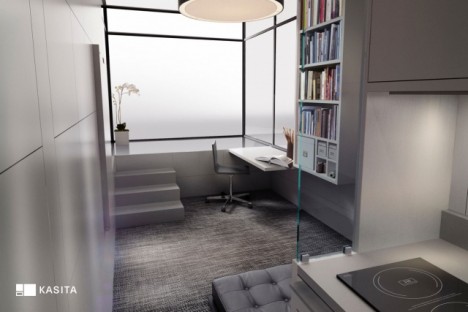
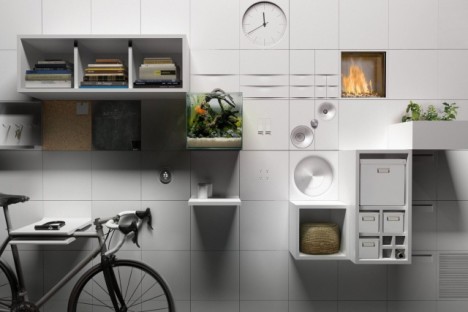

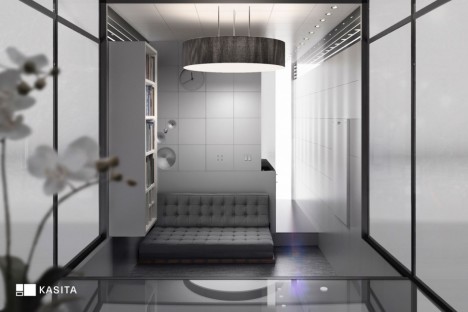

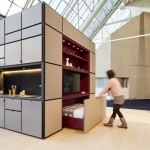
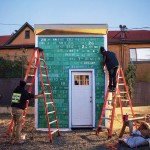















You must be logged in to post a comment.